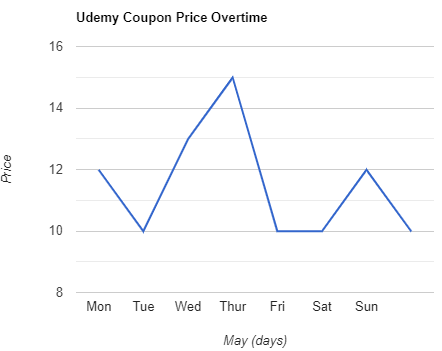Site Planning Online
How to plan a site, its infrastructure and public spaces so that it is sustainable, supports human needs, compatible with its natural and man-made surroundings, adaptable and economically efficient. The course includes many examples of well planned sites.
Created by: Mary Anne Ocampo
 Quality Score
Quality Score
Overall Score : 0 / 100
 Live Chat with CourseDuck's Co-Founder for Help
Live Chat with CourseDuck's Co-Founder for Help
 Course Description
Course Description
Site planning has been taught in urban planning, landscape architecture and architecture programs for over a century and continues to be a foundation course for those who aspire to plan the built environment. It is a required subject on licensing and certification programs for each of these disciplines. Mastering the art of site planning requires substantive knowledge, well-honed design skills, and familiarity with examples and prototypes of site organization. This course provides the perspectives of leading academics and practitioners on the important issues in preparing site plans. It offers a foundation of knowledge, and the opportunity to apply what is learned in preparing a site plan.
The course is organized in 10 one-week units, each containing 3-6 video learning modules. Each module is presented by an expert in the area being covered: Gary Hack, Mary Anne Ocampo, Brent Ryan, Dennis Frenchman, Shail Joshi, Zhuangyuan Fan, Eran Ben-Joseph, Jim Wescoat, Carlo Ratti, Larry Vale, Bob Simha and Tunney Lee of MIT; Dennis Pierprz, Elaine Limmer, Greg Havens and Martin Zogram of Sasaki; and Lynne Sagalyn of Columbia University. The topics covered during each week are:
Introduction: site values; exemplary greenfield and urban sites.
Site analysis: natural site analysis; man made context of sites; infrastructure capacity; development regulations and policies; sites as property; integrating site knowledge.
Site planning methods: planning processes; users, stakeholders and the public; economic value of sites; design methods; digital media for design; creating a site proposal.
Site infrastructure: stormwater management; complete streets; pedestrian realms; water supply and disposal; energy for sites; intelligent infrastructure.
Site concepts and performance: placemaking; subdivision and site assembly; scoring site performance; impact assessment.
Residential sites: history of residential sites; typology of housing forms; housing and community design; dense residential sites.
Places for commerce and work: prototypes for shopping; future workplaces; innovation zones; planning for e-commerce.
Places for recreation and culture: Landscape structure; urban public spaces; human development and play; cultural districts.
College and university planning: types of universities; campus form and communication; new campuses; networked campuses; planning for adaptability.
Planning communities: mixed use development; new communities; the future of communities; concluding remarks.
Students will be examined in 4 quizzes about their comprehension of the materials covered.
In addition to viewing the modules, students will have the opportunity to prepare a site plan in three stages: a site analysis (3 weeks); a program and concept plan (4 weeks) and a detailed plan for part of the public domain of a site (3 weeks.) The course will provide basic data on two sites that may be used for this exercise. Alternatively, students may select a site in their own community and use it for their project. Or if the course is being taken in parallel with a university level studio or workshop, the results may be submitted for grading and feedback.
 Instructor Details
Instructor Details

- 0.0 Rating
 0 Reviews
0 Reviews
Mary Anne Ocampo
Mary Anne Ocampo teaches site planning and urban design at MIT and is a principal in the multi-disciplinary design firm Sasaki. She has led many institutional planning projects, including master plans for Syracuse University, Virginia Tech, the University of Texas at Austin, the University of Kentucky, Clemson University, and Universiti Teknologi Petronas in Indonesia. She has been the urban design principal for the Texas Capitol Complex, Kabul Urban Design Framework in Afghanistan, and Ananas New Community in the Philippines, a project that was awarded APA's Pierre L'Enfant International Planning Achievement Award. Her research focuses on urban resilience in socio-economically and environmentally vulnerable contexts. In her research practice, she has collaborated with the World Bank on citywide development approaches for communities vulnerable to flooding in Metropolitan Manila and has recently worked with the Universit Iuav di Venezia on urban design strategies for the Venice Lagoon. Prior to joining MIT's faculty, she taught at Syracuse University, Wentworth Institute of Technology and Cornell University. She was educated in architectural and urban design, with degrees from the University of Kentucky, Cornell University, and Harvard University. She currently chairs the Sasaki Foundation, which promotes innovation in design practice. She is active in the Society of College and University Planning, Boston Society of Architects, Leventhal Center for Advanced Urbanism, and oth




